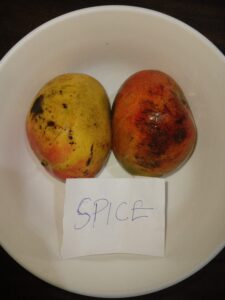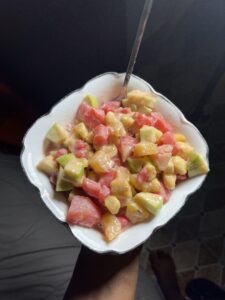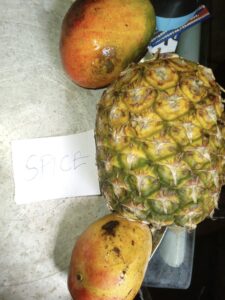Mangoes are delicious tropical fruits that belong to the Anacardiaceae family. They are native to South Asia but are now cultivated in many other parts of the world with a suitable climate. Mangoes come in various shapes, sizes, and colors, ranging from green, yellow, orange, to red.
Here are some key points about mangoes:
1. Varieties: There are hundreds of mango varieties, each with its own unique flavor, texture, and aroma. Some popular varieties include Alphonso, Tommy Atkins, Kent, Keitt, and Ataulfo.
2. Taste and Texture: Mangoes are known for their sweet, juicy flesh with a tropical flavor. The taste can vary depending on the variety, ranging from mildly sweet to rich and aromatic. The texture can be creamy and smooth or slightly fibrous, again depending on the variety.
3. Culinary Uses: Mangoes are incredibly versatile and can be enjoyed in various ways. They can be eaten fresh on their own, sliced and added to fruit salads, blended into smoothies, pureed into sauces and salsas, or used in desserts, such as mango ice cream or mango cheesecake. In many cuisines, mangoes are also used in savory dishes, such as curries, chutneys, and salads.
4. Seasonality: Mangoes have a specific growing season and are typically available in abundance during the summer months in tropical and subtropical regions. However, with modern transportation, mangoes can now be found in some form year-round in many parts of the world.
5. Nutritional Profile: As mentioned earlier, mangoes are packed with essential vitamins and minerals. They are a good source of vitamin C, vitamin A, vitamin E, potassium, and dietary fiber. However, the exact nutrient composition can vary slightly depending on the variety and ripeness of the mango.
6. Ripeness: Mangoes are harvested when they are mature but still firm. They continue to ripen after picking, becoming softer and sweeter over time. Ripe mangoes have a slightly yielding flesh and a fragrant aroma. You can judge the ripeness by gently squeezing the mango; it should give slightly under gentle pressure.
7. Selecting and Storing: When choosing mangoes, look for fruits that are plump, unblemished, and have a fruity aroma at the stem end. Avoid mangoes with bruises, mold, or a shriveled appearance. Once ripe, mangoes can be stored in the refrigerator for a few days. If you want to speed up the ripening process, you can keep them at room temperature in a paper bag.
8. Precautions: Some individuals may be allergic to mangoes, particularly the sap found in the skin. If you have a known allergy to poison ivy or poison oak, you may be more likely to have an allergic reaction to mangoes as well. Additionally, mangoes contain a compound called urushiol, which can cause skin irritation in some people.





No comments yet, be the first to leave one!